- Home
- Jackie French
Gold graves and glory Page 2
Gold graves and glory Read online
Page 2
MORE MESS!
Canvas tents sprang up along the River Yarra, while diggers bought food and equipment to take with them to the goldfields.
TENT AND GARDEN
Some tents were fancy and even had canvas windows that could be opened. Others were just a sheet of old canvas or sailcloth draped over a couple of sticks in the ground.
Because many of the diggers had never put up a tent before, these canvas homes often fell down in the first storm.
By 1852, the mass of tents looked almost like a canvas town. There were streets between the rows of tents—and, with what was already typical Australian humour, they were called after the streets in the rich parts of London—Bond Street, The Strand, Regent Street. Governor La Trobe decided to charge the diggers five shillings a week per tent.
Construction stopped on big new stone buildings throughout Melbourne as the workers made off to the diggings.
Hundreds of would-be gold miners took one look at smelly Melbourne—the heat, the flies and the lack of good roads to the goldfields—and bought a passage on the next boat home.
HOW DO WE GET TO THE DIGGINGS?
The colonies had few roads. Even in the towns there were not many streets paved with bricks or cobbles. There were proper roads to some of the outlying settlements—but none to the goldfields!
There were no shops out there, either. So rough timber huts were built quickly in Melbourne to sell supplies like food and alcohol. Diggers needed to carry everything with them—food that would last, such as flour, tea, salt, salt meat, dried fruit and treacle.
COCKY WANT A CRACKER?
Small farmers were called ‘cockys’ or ‘cockeys’—perhaps because they farmed out where the cockatoos were, or because there were lots of them and they destroyed the land—or maybe because their land had more cockatoos than sheep. Treacle and golden syrup were known as ‘cocky’s joy’, because their sweetness was the one luxury that ‘cocky’, or poor, farmers could enjoy.
The diggers also had to carry a tent, blanket, spare boots and trousers if they had any, a billy to boil water for tea, a pan, pick and shovel, flint and steel to make a fire, a knife, and maybe an axe or a gun.
Diggers also raided farms and stole fruit and vegetables, or killed sheep and cattle for food—just as the convicts and ex-convicts did. Many diggers were ex-convicts too. Petty crime and lots of crooks were still very much part of Australian life.
Diggers with enough money bought a packhorse or two to carry this lot, and a horse to ride as well. Poorer diggers used a wheelbarrow, or relied on ‘shanks’s pony’—their own two legs.
Most diggers tried to carry too much and jettisoned it along the road. The way to the diggings was littered with everything from spades to tablecloths.
But soon bullock trains began to carry goods the miners might need. Teams of bullocks could carry massive loads in places that horses couldn’t manage—through mud, up steep hills, over rivers—till they, too, finally got to the diggings.
Often there were so many faint tracks where horses or bullock trains had gone that the traveller didn’t know which one to take.
CHAPTER 4
LIFE ON THE EARLY GOLDFIELDS
Before the miners arrived, the lands that were to become the various goldfields all looked beautiful in their own way—lagoons with water lilies and ducks in the Araluen valley, creeks and grasslands by Ophir, the rich timbered country of Ballarat and Bendigo. But within weeks all goldfields looked much the same—a cross between a swamp and an army camp.
Tents that had started out white quickly became the colour of mud. Any trees in the way were chopped down for firewood. The rain leaked through the canvas and bush flies crawled over everything. (Most of the newcomers had never seen so many flies in their lives.) There were fleas and bed bugs on the blankets, and lice and nits, plus the occasional poisonous snake.
Often the diggers put up a flag by their tent or claim to show what country they were from: Poland, Russia, Belgium, the United States, the United Kingdom, Italy …
The earth around the tents was dug up as if a million wombats had camped there. Men’s heads kept bobbing up and down in their holes, cradles rocked back and forth shaking out the gold; there were the sounds of picks and shovels and rattling gravel, yells and cries in dozens of languages.
The miners mostly ate salt meat and damper (a rough bit of flour and water dough thrown in the ashes of the fire, then hauled out when it was cooked), doughy in the middle and charcoal hard on the outside. The meat was usually stuck on the end of a green branch and pointed over the fire till it too was cooked.
Even a rumour of gold sent men rushing from one diggings to another. (There was no TV, radio or telephone to tell people if the claim turned out to be false, so they kept on coming.)
WHERE’RE THE CHICKS?
Respectable women were not supposed to go off adventuring, but some did go with their men. And a few even dressed up as men to go adventuring, too!
Other women became store-keepers while their husbands looked for gold, or worked in pubs, especially as the goldfields grew into rough towns. Some women even set up their own shops or pubs, either buying the alcohol or brewing it illegally. Other women became singers or dancers and still others met the needs of lonely men.
SERGE OF ENTHUSIASM
Diggers mostly wore tough trousers in grey serge or in denim. A German-American called Levi Strauss had taken a tough cotton material to the Californian goldfields in 1853. Originating in the French city of Nimes, it was called ‘serge de Nimes’, later ‘de Nimes’ and ‘denim’.
The diggers’ shirts were red or blue and usually pretty faded. They wore broad-brimmed hats made from cabbage tree leaves, and sometimes a colourful sash like a belt in red, blue or yellow, with maybe a bright-spotted handkerchief about their throat.
The nights on the goldfields were lit by thousands of small fires, or sometimes a flash from a gun. Miners would often gather around a fire while a flute or fiddler played tunes from the country they’d come from, and the diggers would sing—often putting new words to the old familiar tunes.
By 1853, the diggings—if not quite ‘home’—had a more permanent feel. The shops may still have been only tents, but you could buy everything from dried fish, raisins, potted anchovies or sugar candy, to cheese, butter, bread, yellow soap, ribbons for ladies, saddles, frocks, shirts, shovels, nappies for the baby, tallow candles, and green veils to keep the dust and flies from your eyes.
There were more women now, too, mostly trying to keep house in their tent, with sacks on the floor, sheets as well as a blanket on the bed, and maybe a pet cockatoo for company while their husband was away panning.
HOW TO SPEAK ‘DIGGER’
Some new terms like ‘gold fever’ came from the Californian goldfields. Others like ‘cradles’ were mining terms. But many of the new words or phrases, like fossick, or ‘knock out a living’, were made in Australia.
New chum—someone who’s just arrived at the diggings
Duffer rush—no decent gold to find
Golden holes or jeweller’s shops—a lucky strike
Eureka—the ancient Greek word for ‘I’ve found it’—in this case, gold!
Blanks, duffers, shicers—unsuccessful holes
Dedicate it to the Queen—what to do with a duffer hole
Digger hunters—officials looking for diggers who hadn’t paid their licence fee
Joe—anyone in authority
Claim jumping—pinching someone else’s hole
Night fossickers—thieves who raided other people’s claims at night
To salt or pepper—add a bit of gold to a poor claim so it could be sold to a new chum
Grog shops and shanties—illegal pubs, often just tents where alcohol was brewed
A COACH SERVICE—AT LAST!
Freeman Cobb and his three partners were Americans who’d worked with Wells Fargo stagecoaches on the Californian goldfields.
In July 1853 they opened their
own stagecoach firm in Melbourne, using the light Concord coaches built in the United States. They called their firm Cobb & Co.
The population of the colonies grew rapidly. By 1871 there were 1.7 million people!
FOOD, GLORIOUS FOOD
Food was expensive on the diggings—especially fresh food. Half a sheep might cost only about 8 pence, but tea could cost 3 shillings and sixpence a pound, sugar about 1 shilling and sixpence a pound, and flour a shilling a pound.
Fruit and veg were sometimes so expensive that shopkeepers couldn’t afford to buy them to sell. In 1852 a cartload of Tasmanian apples sold for £57—enough money for a family to live on for a year. A meal in one of the tent ‘shanties’ along the road to the goldfields could cost 6 shillings. It was easier to get rich as a shanty owner or a shopkeeper than it was as a digger.
The government wouldn’t let diggers take extra land to grow their own vegetables, either—and many grew sick from lack of fresh food.
CALIFORNIA WIDOWS
Wives left to cope while their husbands went looking for gold were called California Widows. Many women were left without any money at all, and there were few jobs for them, especially if they had kids. So they often took in washing to survive.
Things grew worse when it rained. The tracks were so muddy that even bullocks couldn’t get through with supplies. Miners could starve—whether they found gold or not.
There was usually plenty of meat, though, bought from local squatters. Sheep were driven to the goldfields in their thousands.
A live sheep cost about 12 shillings, or 16 shillings cut up into meat.
WELCOME STRANGER
The Welcome Stranger was the largest nugget ever found in the world when it was discovered by John Deason and Richard Oates on 5 February 1869 at Moliagul, about 9 miles northwest of Dunolly in Victoria. The nugget was just a couple of inches below the surface among the roots of a stringybark tree. It weighed about 2316 troy ounces and was about 23 inches long. There is now a monument marking the spot.
GOLD CHANGES EVERYTHING
The diggers who did become rich rode back to Sydney or Melbourne and bought fine houses. Some even gave their horses gold horseshoes (which didn’t last long) and dressed their servants in silk dresses.
Many people were making more money in the towns now. There weren’t enough servants or builders, or other tradesmen left to do the work.
Wages had to be high to attract workers. There were more jobs too, especially in the foundries that had developed to help build and repair engines, pumps and quartz crushers.
Graziers were doing better, too. Before the discovery of gold, they had to send most of their wool overseas. Now there was a growing population who needed clothes and blankets—and who wanted to eat their produce, or wear boots made from cowhide.
And everyone needed horses, either to ride or to pull drays, sulkies, carriages, coaches, carts, or as ‘engines’ for puddling machines. Even most servants had a horse for riding to church on Sundays.
But there was another side to the glory of the goldfields. The men who rushed to find gold had often been involved in the Irish rebellions against the English, or were ex-convicts who had been sent to Australia for crimes like trying to form a trade union to improve workers’ conditions.
And as the first gold that had been easy to find ran out, these men (and women, too) got hungrier—and angrier.
Australia’s convicts and the soldiers had rebelled before. But these rebellions had fizzled out. Now the goldfields were going to brew a new kind of rebellion.
GRANNY SMITH STRIKES APPLE!
Mrs Maria Smith sold apples from her orchards in Eastwood at the Sydney markets, where she was known as ‘Granny Smith’.
In the middle of all the gold fever, she tipped a case of rotten French Crab apples from Tasmania into a gully behind her farmhouse. The apples that grew from them were bigger, crisper, sweeter and paler green than the French Crabs, and good for eating fresh, as well as cooking and keeping through winter.
Maria grafted lots of the new fruit onto seedlings and began to sell the trees.
The Granny Smith was to become the world’s most popular apple and earn even more money than all the colonies’ gold rushes.
Sadly, Maria died in 1870, and never saw what she called her ‘Smith’s Seedling’ become famous.
CHAPTER 5
THE EUREKA STOCKADE
Finding gold was a wonderful dream—but few people made a good living out of it. In February 1852, maybe five people in 100 got rich, 45 made just enough to live on, and 50 starved. But by the end of that year, maybe 90 out of 100 diggers didn’t even make enough to buy food or clothes. Soon most of the easily-panned gold was gone, too.
And you couldn’t just decide to pan for gold, either. The government appointed special Gold Commissioners to sell licences to the diggers to permit them to look for gold. The licence cost 30 shillings a month. (A good weekly wage was about 60 shillings a week.) This gave a party of usually three to six men a claim of about 15 to 24 feet that they could work on.
The trouble was that the licence fee was more than most diggers could pay, and it could also take three days of queuing every month just to get the licence.
JUMPING A CLAIM
If claims were not guarded, they could be ‘jumped’ or taken over by others. Fights were common—with fists, or even guns.
THE FIRST RIOTS
The discontent began in New South Wales, right at the start of the gold rushes. Diggers on the field along the Turon River near Bathurst threatened to riot over the expensive licence fees.
The governor of New South Wales, Governor Fitzroy, wisely reduced the fees by two-thirds. But the police digger hunts continued. Police would descend on the goldfields and seek out those diggers who had not paid their fees. They were hauled before magistrates and fined £5. The fine doubled every time they were caught.
The diggers were also angry that the government didn’t give them anything in return for their fees—like roads to the goldfields and protection against bushrangers. And, as most miners didn’t own any land, they couldn’t even vote.
Diggers had to carry a licence at all times and any official could stop them and demand to see it. The licence could get wet at the diggings—hut if the owner left it in his tent, he’d be chained up to a tree or a log, then marched off at bayonet point.
The diggers got angrier. They tried any trick they could think of to escape the inspections. Some men even dressed up as women when the troopers arrived.
The high cost of licences was only part of the problem, though. The commissioners, police and troopers who collected the fees had extraordinary powers and most of them treated diggers as if they were crooks. In fact many diggers were crooks—ex-convicts or just shameless adventurers—but the constables were often crooks, too. Sometimes ex-convicts and often drunk, they took bribes to let the real villains go. Even commissioners and magistrates sometimes took bribes on the side from illegal grog shop owners.
Between 1851 and 1854 tension was building on the goldfields as miners moved from one gold rush to the next. And small clashes between the miners and the police occurred more frequently.
At Ballarat in Victoria, things got even worse when the government started sending soldiers to collect the fees, too. And when Sir Charles Hotham replaced La Trobe as Governor of Victoria in June 1854, he cut back all government spending and began the rigorous enforcement of all licensing laws, starting with twice-weekly licence checks.
The gold rushes hadn’t brought the fortunes the diggers had expected. Most of the surface alluvial gold was gone. Men had to really dig for gold now—and every month the digging had to go deeper and deeper to find any gold at all.
The diggers were poor, angry, often hungry—and even more often drunk. It was only going to take some small provocation to spark a riot.
And then it happened.
NOT HAPPY, HOTHAM!
On 6 October 1854, two drunken Scots diggers demanded t
hat James Bentley, the guy who owned the Eureka Hotel, give them a drink.
Bentley was an ex-convict from Van Diemen’s Land—and he had a short temper. He refused. There was an argument that became a brawl and one of the Scots, James Scobie, was kicked and clubbed to death. It seemed pretty obvious that Bentley had done the kicking and clubbing and he was arrested. But Bentley was mates with the local government officials. Police Magistrate Dewes said he didn’t have to stand trial and he was let go.
The diggers were furious. How come mates of officials got away with things like this?
The call of ‘Roll up! Roll up!’ went out on 17 October. The meeting decided to form a committee to ensure that Bentley stood trial.
But this wasn’t enough to satisfy many of the men. A crowd gathered outside the Eureka Hotel and burnt it to the ground.
Governor Hotham ordered Bentley and his mates arrested, as well as the diggers who had been responsible for the fire. Three diggers were found guilty of arson on 25 November.
While all this was happening, the diggers held meetings and set up the Ballarat Reform League under the leadership of the Chartists Henry Holyoake, George Black and J.B. Humffray.

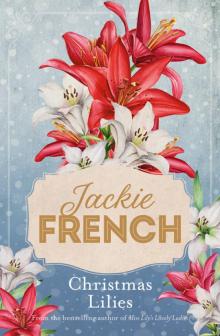 Christmas Lilies
Christmas Lilies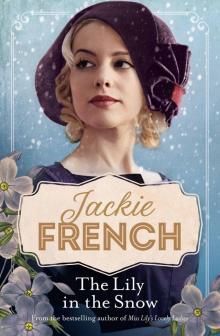 The Lily in the Snow
The Lily in the Snow The Schoolmaster's Daughter
The Schoolmaster's Daughter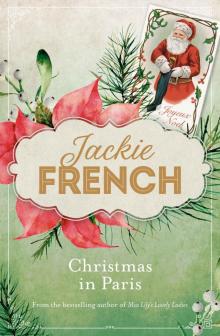 Christmas in Paris
Christmas in Paris Lilies, Lies and Love
Lilies, Lies and Love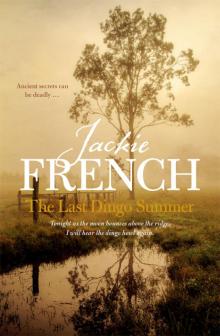 The Last Dingo Summer
The Last Dingo Summer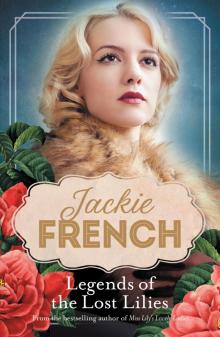 Legends of the Lost Lilies
Legends of the Lost Lilies Just a Girl
Just a Girl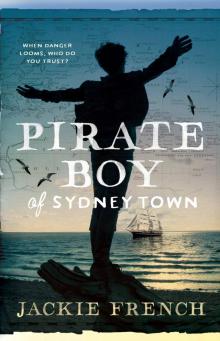 Pirate Boy of Sydney Town
Pirate Boy of Sydney Town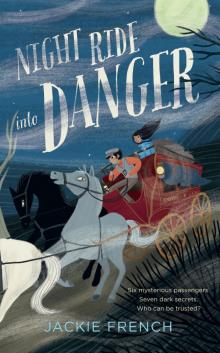 Night Ride into Danger
Night Ride into Danger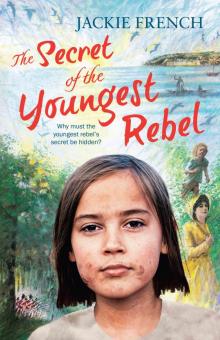 The Secret of the Youngest Rebel
The Secret of the Youngest Rebel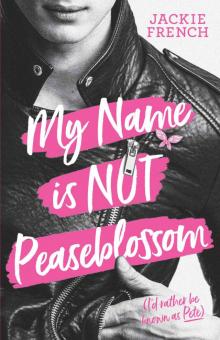 My Name is Not Peaseblossom
My Name is Not Peaseblossom Goodbye, Mr Hitler
Goodbye, Mr Hitler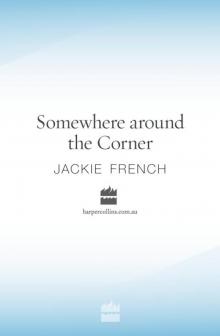 Somewhere around the Corner
Somewhere around the Corner Dingo: The Dog Who Conquered a Continent
Dingo: The Dog Who Conquered a Continent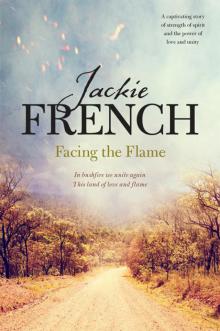 Facing the Flame
Facing the Flame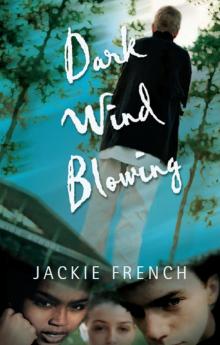 Dark Wind Blowing
Dark Wind Blowing Pennies For Hitler
Pennies For Hitler They Came On Viking Ships
They Came On Viking Ships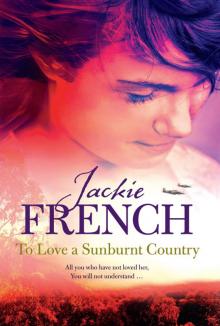 To Love a Sunburnt Country
To Love a Sunburnt Country The Ghost of Howlers Beach
The Ghost of Howlers Beach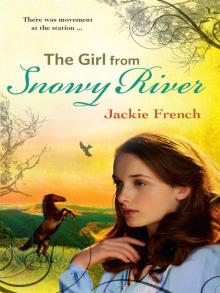 The Girl from Snowy River
The Girl from Snowy River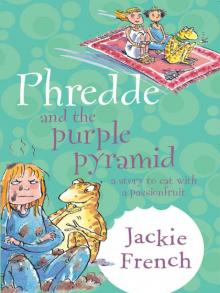 Phredde and the Purple Pyramid
Phredde and the Purple Pyramid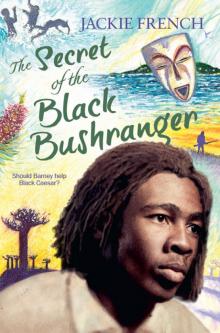 The Secret of the Black Bushranger
The Secret of the Black Bushranger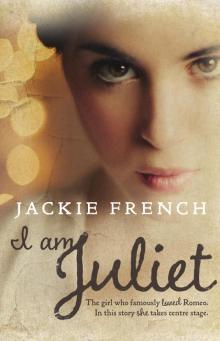 I Am Juliet
I Am Juliet Barney and the Secret of the French Spies
Barney and the Secret of the French Spies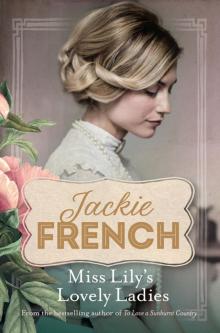 Miss Lily’s Lovely Ladies
Miss Lily’s Lovely Ladies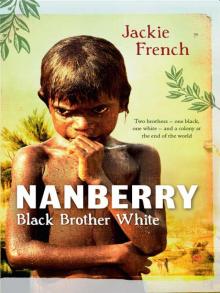 Nanberry
Nanberry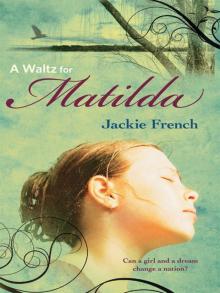 A Waltz for Matilda
A Waltz for Matilda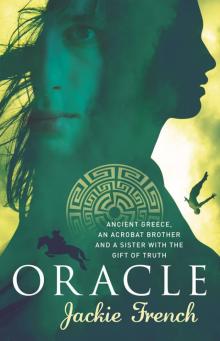 Oracle
Oracle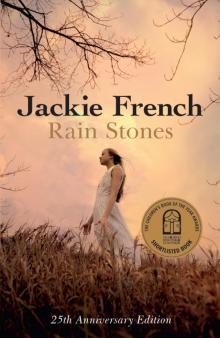 Rain Stones 25th Anniversary Edition
Rain Stones 25th Anniversary Edition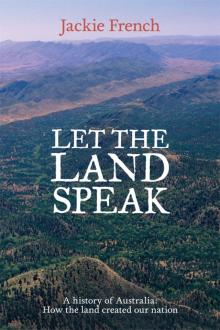 Let the Land Speak
Let the Land Speak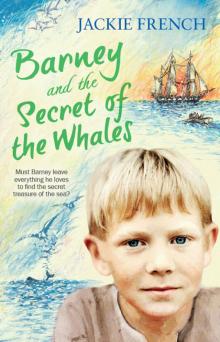 Barney and the Secret of the Whales
Barney and the Secret of the Whales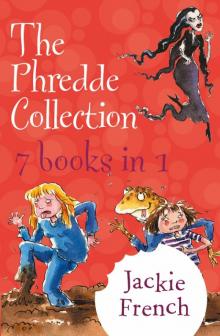 The Phredde Collection
The Phredde Collection Year in the Valley
Year in the Valley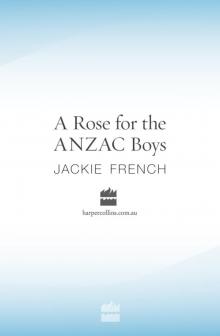 A Rose for the Anzac Boys
A Rose for the Anzac Boys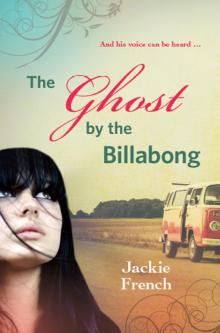 The Ghost by the Billabong
The Ghost by the Billabong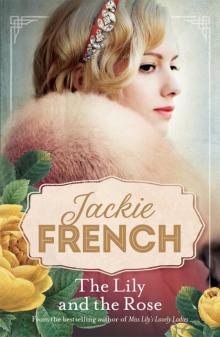 The Lily and the Rose
The Lily and the Rose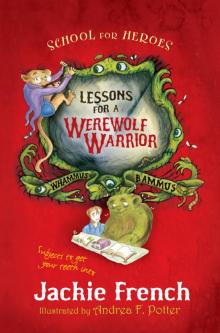 Lessons for a Werewolf Warrior
Lessons for a Werewolf Warrior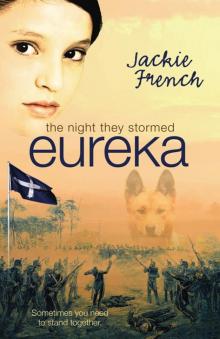 The Night They Stormed Eureka
The Night They Stormed Eureka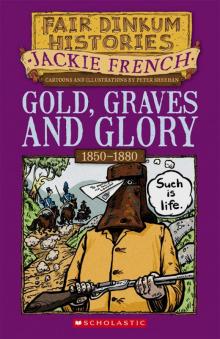 Gold graves and glory
Gold graves and glory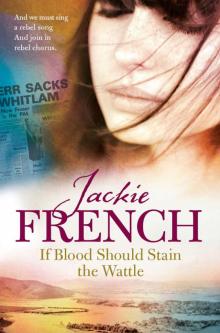 If Blood Should Stain the Wattle
If Blood Should Stain the Wattle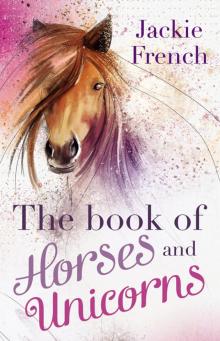 The Book of Horses and Unicorns
The Book of Horses and Unicorns Ophelia
Ophelia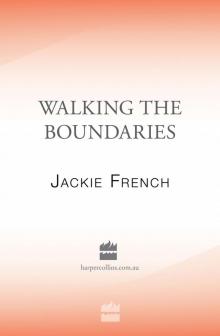 Walking the Boundaries
Walking the Boundaries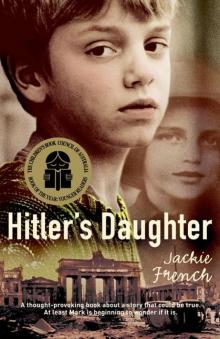 Hitler's Daughter
Hitler's Daughter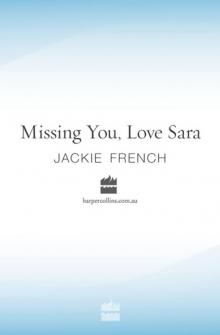 Missing You, Love Sara
Missing You, Love Sara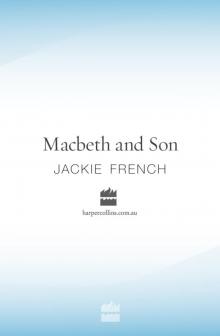 Macbeth and Son
Macbeth and Son Wonderfully Wacky Families
Wonderfully Wacky Families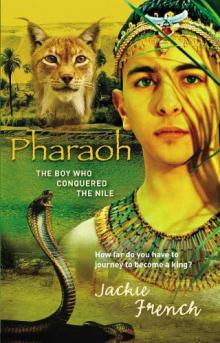 Pharaoh
Pharaoh Dance of the Deadly Dinosaurs
Dance of the Deadly Dinosaurs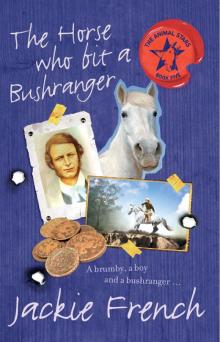 The Horse Who Bit a Bushranger
The Horse Who Bit a Bushranger One Big Wacky Family
One Big Wacky Family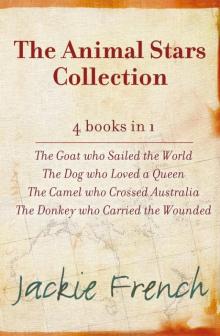 The Animal Stars Collection
The Animal Stars Collection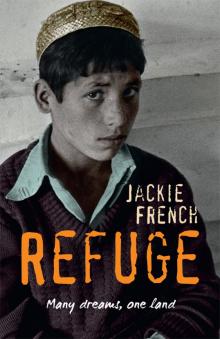 Refuge
Refuge Third Witch
Third Witch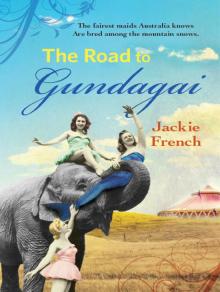 Down the Road to Gundagai
Down the Road to Gundagai